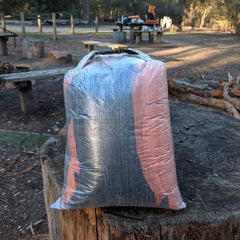
Hiking In Bad Weather
It's important to be prepared for all changes in the weather before you hit the trail. Being prepared for rain, hail, lightening and wind could be a life saver.
The best thing to do is to avoid going out on trail if you know bad weather is on it's way but if you get caught out, hopefully some of the following tips will help.
Check the weather forecast before you leave
This not only applies to rain but also temperature. When checking the weather forecast before you leave, make sure you check for the elevation you will be climbing to, not just in the closest town, as these will be different.

Photo by Tristan Pineda
Waterproofing
Having a backpack made out of a waterproof fabric like dyneema, which has been seam taped is highly recommended. Backacks made out of other materials tend to hold onto moisture and increase your pack weight once they get wet. Having a pack cover can help and inserting a waterproof pack liner will ensure your items stay dry. Using dry bags is another redundancy to keeping everything dry.

Protective Rain Gear
JACKET - Make sure you have good rain jacket with pit zips the zips help regulate your body temperature to stop you sweating under your rain jacket.
PANTS - When choosing pair of rain pants, i recommend ones with zips at the bottom so you can put them on without having to remove your shoes.
UMBRELLA - Having an umbrella can also be great, it not only serves to protect you from rain but it also means you can take a break without having to find shelter or protect you from the sun.

Food
If the only food you've packed is cooked food, taking breaks while it's raining can be difficult. It means you need to find shelter and do the best you can or miss out on eating because it's too much of a hassle. If you take more snacks and non-cooked food when you are expecting bad weather it will be a bit easier.
Setting up camp
It's best to wait until there's a break in the weather before setting up camp and find an area with some sort of tree cover to give you some extra protection. Make sure you take notice of any dead limbs on the trees above. During a storm or heavy rain, limbs can fall on you in the night and kill you - hence the term widow makers.
Try to find flat ground, you don't want water pooling up under your tent if you've set up in a small dip. Adding a groundsheet under your tent will also help keep you nice and dry inside. Make sure your groundsheet is under your tent. If it's sticking out a little bit, the rain will pool on top of it and collect under your tent during the night.
Change out of your wet clothes
Once you're all set up and have your gear inside the tent, change out of your wet clothing. Just putting on something dry will hep regulate your body temperature and keep you warmer. Ring out the wet clothes and lay them out next to you or fashion a clothes line inside the tent and hang them up to dry.
At some point the next day, if you have a break in the weather and the sun comes out, get your wet gear out and lay them out in the sun for a while to dry.
Hail and lightening
If you find yourself in a hail storm, get to shelter as quickly as possible. The shelter might be as simple as a bush to hide under or use your pack as a form of shelter to protect your head.
With lightening, it's recommended you avoid fields, the top of mountains or ridges and away from water. Stay away from tall isolated objects such as trees and if you're in a group, spread out to avoid the current travelling to other group members.
A lightening crouch or lighting stance is recommended if you do find yourself in a bad situation. Crouch down and get up on the balls of your feet reduce the amount of surface area touching the ground. The worst thing you can do is lay flat on the ground.
READ MORE BLOGS HERE



Leave a comment